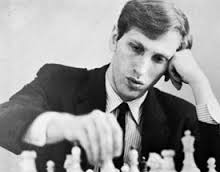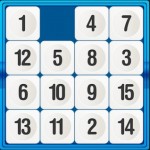The theme this week continues to be ‘attack!’ and this week we’ll look at several aspects of attack (and thus our title), both specifically with patterns and in general terms.
Are you hungry and ready to take some scalps? Let’s attack! But remember that the flip side is always ‘what if I get attacked like this’? Keep an eye on how you might defend against tonight’s ideas!
The Hack Attack The phrase ‘hack attack’ comes from the ‘character’ of the attack plan; the h4 advance is the start of a crude hack – hack – hack (throwing one punch after another) attack on the opponent’s king. The start position below is well into a Sicilian Dragon opening where white has just played the start of the ‘hack’ with h4. Bobby Fisher said about the Dragon that he “had it down to a science: pry open the KR file, sac, sac, mate!” Here is how that works in it’s bare bones form: You might think, ‘how can anyone still play the Dragon??’ But notice: The white bishop on b3 is a key element! What if black had played 13. ..Nc4 instead of a6? And now some romance…! And now some attack patterns from the ‘romantic era’, starting with one of the fastest and most violent gambits of all – the Muzio Gambit. Often played in the 1800’s, this move 6 knight sac (!) was the subject of countless ‘arguments’. Chigorin (white) was one of the top few players of the 1800’s.
Moving your resources to the point of attack like a German Blitzkrieg is the key idea. You must bring your pieces to bear on the ‘schwerpunkt’ – the point of difficulty – while the enemy cannot easily build up to resist you. If the focal point sits atop the enemy king, so much the better! Though Ron might hate me for bringing it up, our most recent game is a great example for our general discussion about attack. Let’s look for signals of what is coming as early as we can. Ron expands queen side, Tom king side, so the attack is obvious. So what went so quickly wrong for black?
Rf2 and Bf1 look like they are meant to defend the d3 pawn, but there were other ways to do that. The purpose was to allow the rook the f-, g- or h-file for attack. This train of thought was highlighted by 18 … Nh7 and 19. N:h7, where Ron lost a key defender that couldn’t be replaced while white could bring more pieces to the attack rapidly. Second, from very early on, Ron ignored the center and allowed the attack to build up. From the earliest possible signal of attack on one wing, look for how to strike back in the center. How could Ron have done that here? A pattern to learn: With pawns on e6 and g6, attack with f5 to break up the defensive wall! It is often fine to sacrifice this pawn to break up the defense. (To defend as black, you might try to play f5 first!) Find and learn more attack patterns by looking at the position after 21. f5. How would you overcome each defensive response? ++++ The answer to ‘How can a fried brain be romantic?” ++++ The ‘romantic era’ of chess was during the 1800s and included names like Paul Morphy, Adolf Anderrsen and Henry Blackburne. The attacking style of the time was characterized by wild sacrifices and thrilling hunts for the king at all costs! Club member Carlos has dubbed his own search for an attacking style his ‘fried brain’ attack, and thus we have ‘romantic era attacking chess’ + ‘the fried brain attack’ = a romantic fried brain! |
The Romantic Hack and Shuffle
Bookmark the permalink.


 Attack doesn’t just consist of wild sacrifice! Does everyone remember playing one of these shuffle games? A chess attack is much like one of these!
Attack doesn’t just consist of wild sacrifice! Does everyone remember playing one of these shuffle games? A chess attack is much like one of these!